Overshadowed by the Elise and Emira, the Evora Is Still a Star
It is taking no great leap of faith to suggest the Lotus Evora will one day be a classic. The list of models wearing Anthony Colin Bruce Chapman’s initials on the nose that haven’t eventually become classics is short, if it exists at all, and while no Lotus is faultless, the Evora has always been well received.
However, it does feel like a car somewhat overshadowed by the Elise it was always sold alongside, and by the Emira that Lotus currently sells. The Elise became a classic in its own lifetime and the Emira will secure its spot if for no other reason than being the brand’s final combustion-engined car, so just for a moment we’re pointing the spotlight on the Evora instead.
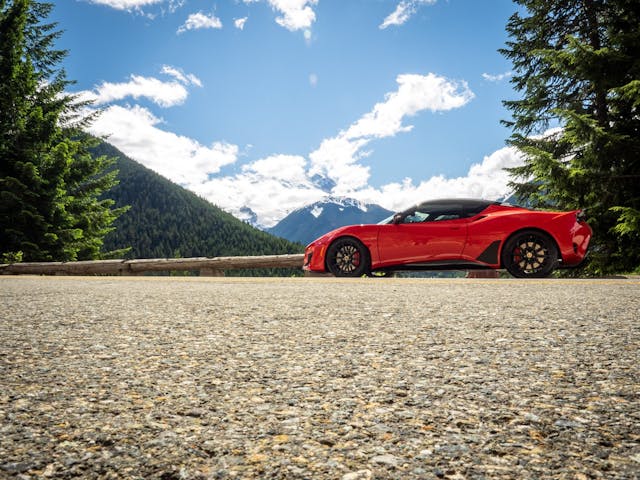
The Evora was designed as the everyday Lotus, pitched somewhere between Porsche’s Cayman and 911 in terms of utility and performance or, if you prefer, as a kind of modern equivalent of the Eclat and Excel.
Unlike the Eclat and Excel, the Evora was mid-engined, but like the older pair it was a 2+2. This meant a Ferrari Mondial—or BMW i8—style arrangement with a pair of nominal seats between the front pair and the engine bulkhead, though only the Ferrari gets credit for finding enough space for anyone taller than a toddler back there.
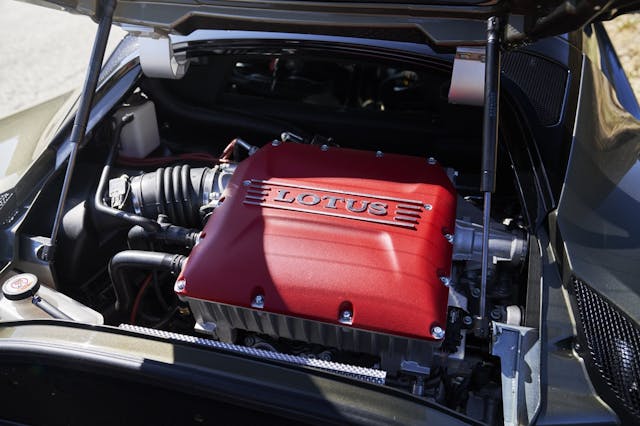
Ferrari eventually found space to fit a longitudinal V-8 behind its plus-twos, but the Evora was altogether more compact, and drew from Hethel’s deal with Toyota for its engine: a 3.5-liter, 60-degree V-6, the bare bones of which it shared with, among other things, the humble Camry sedan. In naturally aspirated form it made 276 hp, while the eventual addition of a supercharger eventually lifted that to well over 400. The later cars really howl thanks to active exhausts, with earlier naturally aspirated models offering more of a musical growl. Both still feel plenty quick enough today—the slowest Evora still does a sub-5 second sprint to 60 mph, with a top speed over 160 mph.
The Emira has attracted praise for feeling notably higher quality and more upmarket than any Lotus that came before it, but it’s easy to forget that the Evora was similarly praised at launch. Next to an Elise, it may as well have been from a different manufacturer, with actual trim covering every surface and an attractive dashboard design, though it’s not inaccurate to say that Porsche owners probably still wouldn’t have been impressed. Lotus improved the Evora over time, and later cars have notably tighter fit and finish, better materials, and a better feel to their controls both minor and major—though the old Vauxhall Astra column stalks were a permanent fixture.
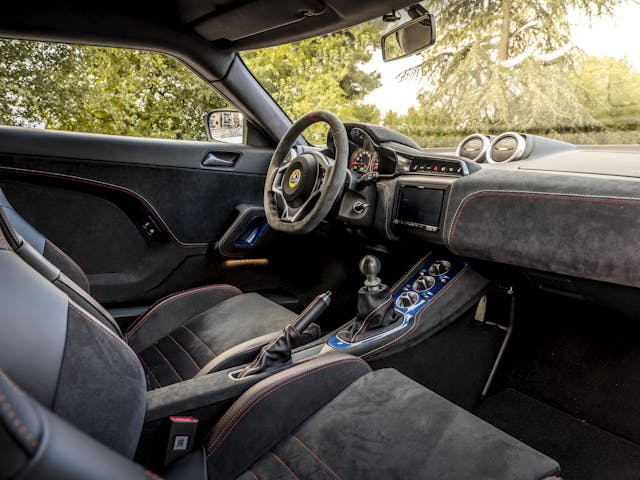
A word on the exterior styling, too, as the Evora’s shape was perhaps one of its greatest strengths. Penned by longtime Lotus designer Russell Carr, it’s notable for two key qualities: It hides its 2+2 layout very well indeed, and it barely seems to have aged. Not everyone will find it pretty, but for a car that launched in 2009, the Evora barely looked a day older when it eventually went off sale in 2021.
The Evora’s real unique selling proposition, though, is in how it drives. It’s no understatement to say that it behaves like a big Elise, despite coming in around 1000 pounds heavier. Like its smaller sibling, the Evora both rides and handles beautifully, with a slight and unsurprising bias toward comfort and ease of use compared to the Elise. Anyone worried that hydraulic steering assistance might have compromised feedback will be pleased to know it makes almost no difference, and the wheel rim still nudges around in your palms over every change in road texture. Few, if any, have done assisted steering better.
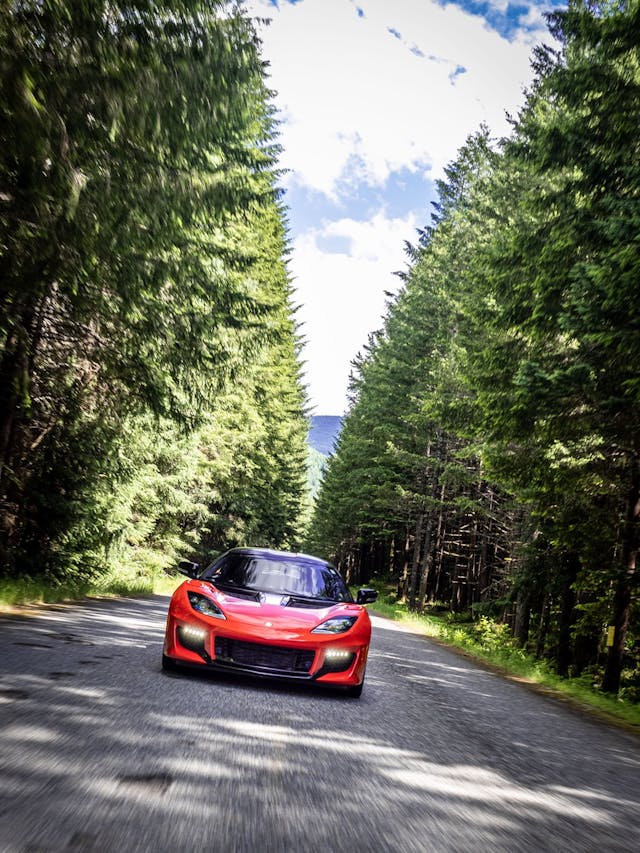
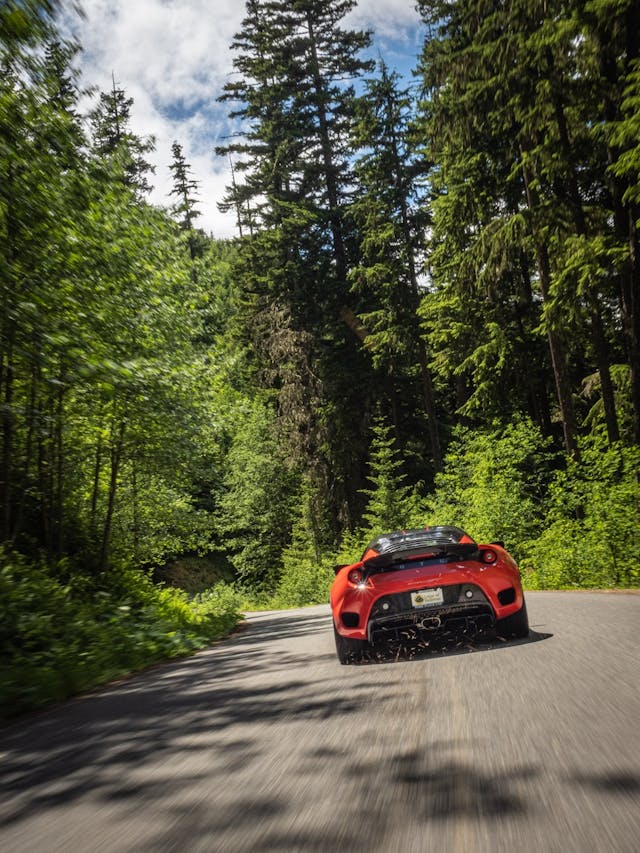
The Evora’s balance was friendlier than that of the Elise, too. It’s a unique and satisfying feeling driving an Evora quickly, and it is one of those cars that only serves to highlight what others are missing. The last your author drove was in a twin test against the then-new Porsche 992, and while the 992 was of course a fine car in its own right, the Evora felt closer to those older, more intimate, and more involving classic 911s. Put differently, with its Japanese mid-mounted V-6, a manual gearbox, and an aluminum structure, it’s basically a more attainable NSX.
And Lotus’s efforts to make the Evora genuinely usable weren’t in vain. The rear seats were of limited use for people but served as an additional place to put luggage (like the Elise, there was a dedicated, if oddly shaped compartment between the engine bay and the back of the car), but the car’s ride, the smooth Toyota engine, and the generally well-appointed interior mean an owner need not dither over taking longer trips, and it’s even relatively frugal over distances, too.
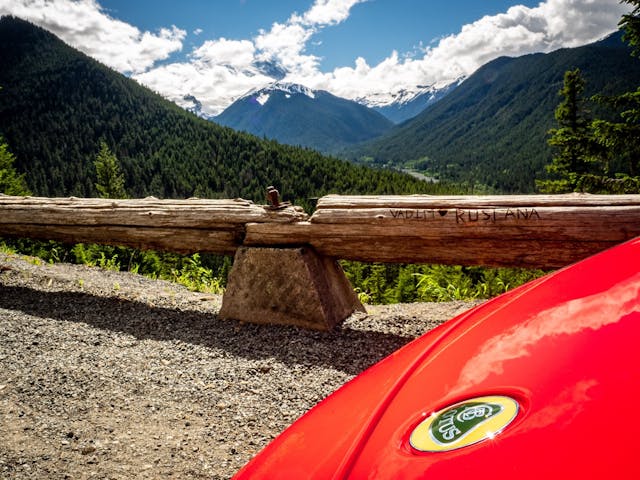
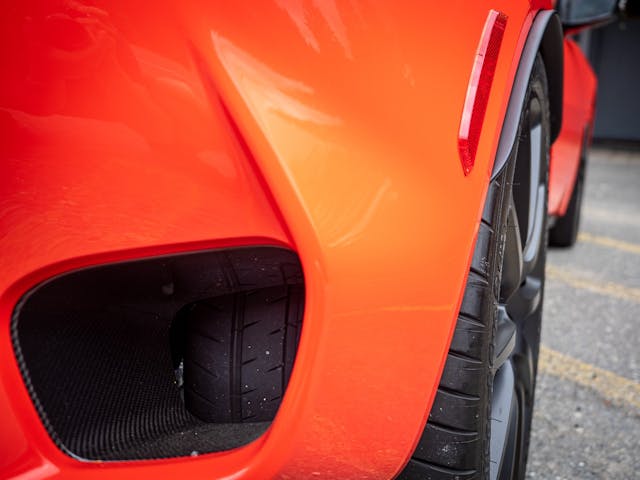
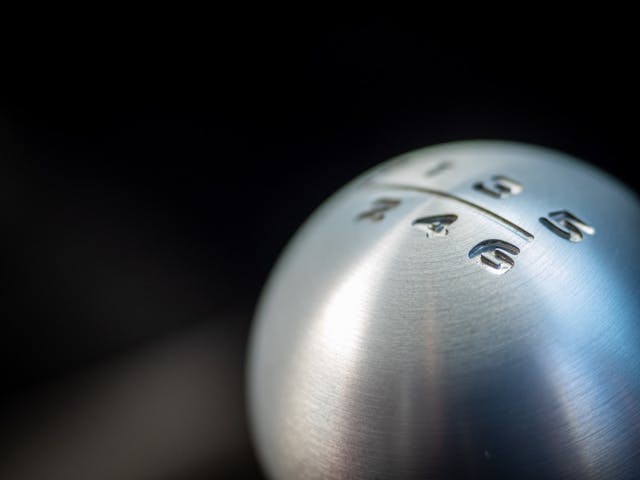
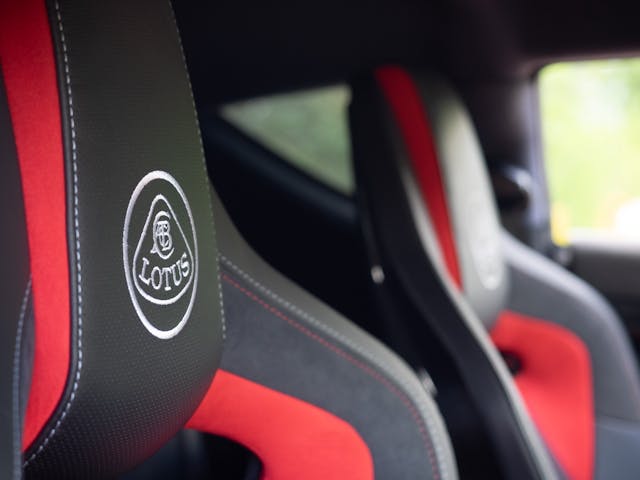
Today, you’ll need somewhere in the region of $45K to get into the least expensive Evoras on the market, while later supercharged 400s and 410s range from $65K to almost $90K. Whether you’re struggling to get hold of an Emira or simply looking for an engaging and special driving experience for the price of a Golf R, the Evora doesn’t feel like a bad way to do it.
***
Check out the Hagerty Media homepage so you don’t miss a single story, or better yet, bookmark it. To get our best stories delivered right to your inbox, subscribe to our newsletters.
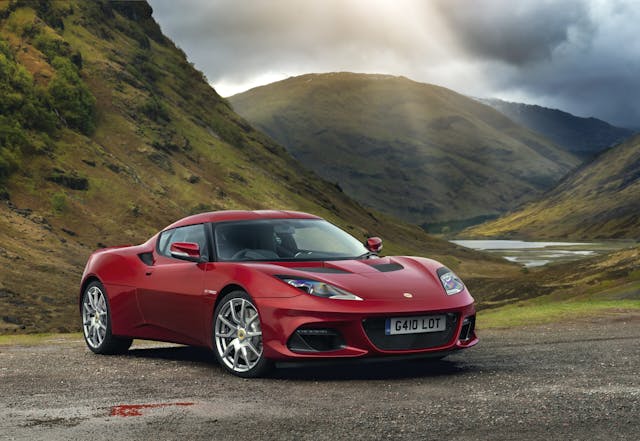


These are great cars, I prefer them to the Elise which I consider to be mostly a track car. Evoras are way more usable for things like overnight weekend getaways. They are almost “real cars.” Around 2010, I took one tent camping and there was just enough space for two people and our gear. Also did a longer thousand-mile drive over a few days and didn’t feel beat up at the end of it.
It’s funny how an objectively excellent car sometimes just doesn’t resonate. I’m a long time multi-Lotus owner (I’ve had my Europa since 1977 and added an Esprit V8 and Elise in the intervening years) but the Evora hasn’t convinced me. I’ve taken a long hard look at an Evora a couple of times and while I can’t argue with any of the positive attributes mentioned in the article I ended up walking away from it on both occasions. Personal taste, I guess.
As far as use is concerned, the Elise may be a bit rawer than the Evora but it is hardly limited to track use. Back in 2012 my wife and took the Elise from the Vancouver area, where we live, down the coastal route to San Francisco We had to be fully equipped for a black-tie wedding reception so required luggage included her formal gown, my kilt and all accessories. The Elise was perfectly comfortable for almost two weeks on the road. However, i can’t beat taking a Lotus on a camping trip – my wife’s idea of “roughing it” is a Best Western.
I own a 2021 and drive it every chance I get. It’s a lovely car, and aside from some known headlight micro-cracking issues it’s been pretty much flawless.
It gets admiration everywhere I go, can manage speed bumps road imperfections without issue, and I never, never see another one on the road. So long as the driver isn’t too tall (I’m 5’8″) you can fit smaller kids in the back for short trips to the mall, etc. I’ve transported a full size cello in hard case, a keg of beer, and myriad other items in it. I even take it weekly to get groceries for my family of four and usually get it all in the trunk (and that’s with two teenagers)! Anyone considering one should give it a try.